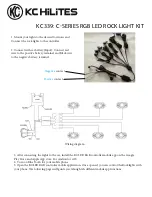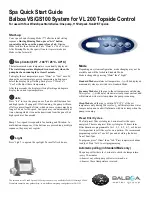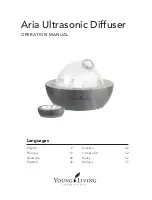
FO-KDF_2016-08
FO-KDF
Delta Fusion Rock Retainer Kit
The rock retainer kit allows you to face the fireplace with thin non-supporting facing such as tiles. It is
not necessary for brick or other self-supporting materials.
Facing material must be NON-COMBUSTIBLE such as metal, brick, concrete board or ceramic tile.
Gypsum board is NOT an acceptable facing material.
WARNING: DO NOT RESTRICT AIR FLOW THROUGH THE LOUVERS OF THE FIREPLACE.
INSTALLATION
1. Start by installing the top center mesh assembly of the rock retainer kit. Place the mesh assembly
on top of the fireplace faceplate so that the arches match. Insert three of the metal spacers
provided between the fireplace faceplate and the rock retainer kit to achieve the
¼” gap desired
along the length of the arch. See Figure 1.
2. Center the top assembly laterally on the facing of the fireplace, pushing it against the fireplace.
Once centered and sitting on the spacers, secure the mesh assembly to the facing of the fireplace
and steel studs above by screwing directly into the facing of the fireplace with the self-tapping
screws provided. The screws do not require a pilot hole to pierce the fireplace facing. Remove the
spacers.
3. Place the left side mesh assembly onto the fireplace. Use the spacers along the top and side to
achieve the correct
¼” spacing. A small gap between the side and center mesh assembly is normal.
Any gap will not be visible when the stone or tile facing is installed.
4. Secure the left side assembly with the self-tapping screws provided
when it’s aligned to your
satisfaction.
5. Repeat steps 3 and 4 for the right side assembly. Secure the mesh extending onto the wall with
nails or staples to ensure it is solid.
6. The 3-sided front wall above the fireplace must be non-combustible. Metal studs are provided with
the fireplace, and cement board is recommended for this area. Cement board does not require
metal lath or metal mesh to support tile or stone; however adding a layer of metal lath or mesh is
acceptable if desired.
7. Using a plasterer's or mason trowel, apply a scratch coat of mortar that covers and fills the wire
mesh and screen. The mortar must be "thin set", or "thin bed" type. Mix to a firm moist consistency.
Let the scratch coat set before adding another coat. This will take several hours. Afterwards, apply
a thinner coat and the facing materials. Do not spread plaster over more than a workable area so
that the mortar will not set before the facing is applied. If required, use a grout bag to fill the joints.
Take extra care to avoid smearing on the surface of the facing (see Figure 2).





















